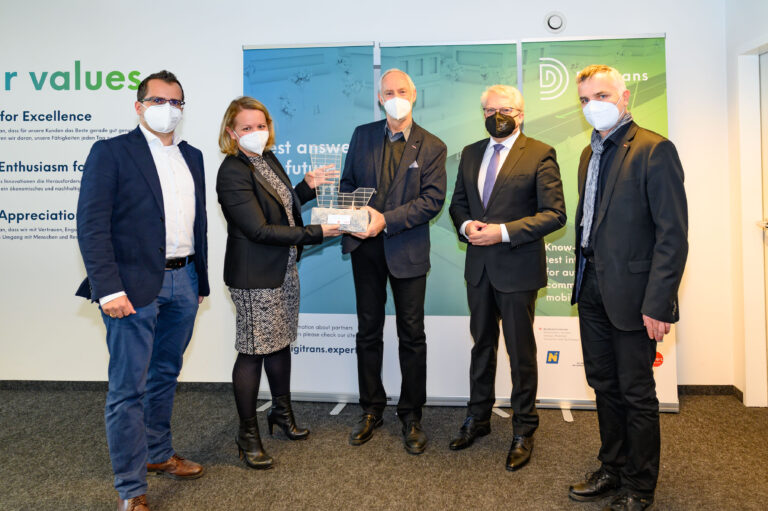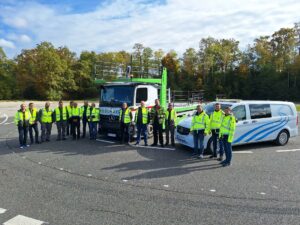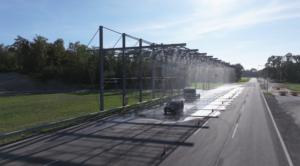Functional use cases and test scenarios for automated vehicles and commercial vehicles at unregulated intersections
To test functional use cases of autonomous vehicles and commercial vehicles, a controlled intersection with 4 junction arms and an uncontrolled intersection with 3 junction arms is implemented on the test track in St. Valentin.
For the crossing area with controlled C-ITS traffic lights, 18 functional test cases are provisionally planned on the test track in St. Valentin. These result in over 195 concrete traffic scenarios due to different speeds and obstacles. Communication V2I is also to be tested in different variants.
Functional use case 1: intersection scenario without traffic light control
Use-Case 1 shows a traffic scenario on an uncontrolled intersection (90°). Vehicle 1 (car) drives straight ahead. Vehicle 2 (van) approaching and turning left is automated. A pedestrian (center of the picture) passes the crosswalk on the street into which the turning (transporter) is entering. The automated vehicle 2 (transporter) detects the oncoming vehicle 1 (car) and lets it pass and brakes to let the pedestrian cross.
Other planned use cases and test scenarios on the test track in St. Valentin:
- Turn scenarios
- Obstacle detection
- Crossing obstacles such as pedestrians, cyclists, motorcycles and much more, crossing scenarios in every form
- Two-way traffic scenarios
The crossings will be developed according to the guidelines of the research society “Straße – Schiene – Verkehr” (“Road – Rail – Traffic”) and the RVS (Richtlinien und Vorschriften für das Straßenwesen, guidelines and regulations for roads). With the traffic light system, C-ITS communications between vehicle and infrastructure can be tested on our test track in St. Valentin.
You might also be interested in
Further Insights

Autonomous driving – what exactly is it and what is the current legal situation?
It describes the movement of a vehicle without a driver. The highly developed systems take over the thoughts and actions of a human driver.

Digitrans selected as Linz Company of the Year 2021
Digitrans has been awarded as the Linz Company of the Year 2021 in the category of business cooperation. The award was presented personally by Linz Mayor Klaus Luger to CEO Eva Tatschl-Unterberger at the Digitrans Office in Linz

Sustainable development through automated freight mobility
In the future, automated freight mobility and autonomous vehicles will be the key to being able to implement more environmentally friendly concepts for traffic and freight transport. The new technologies offer numerous opportunities for the sustainable development…




